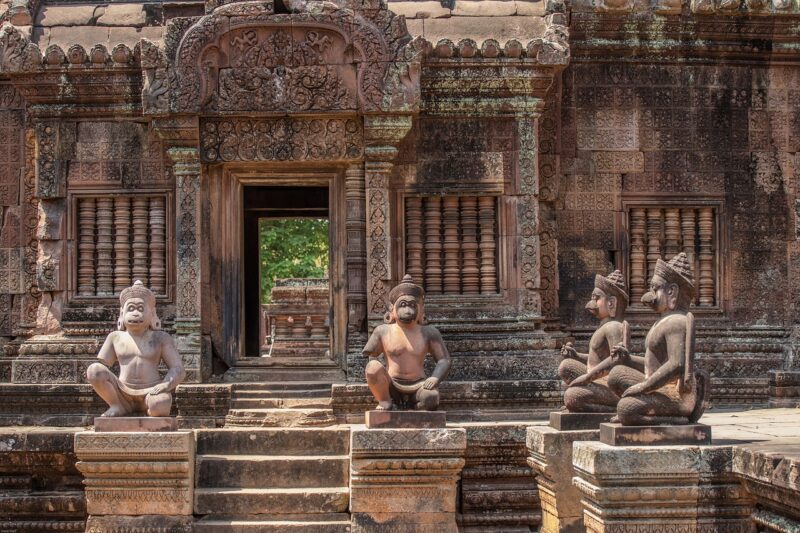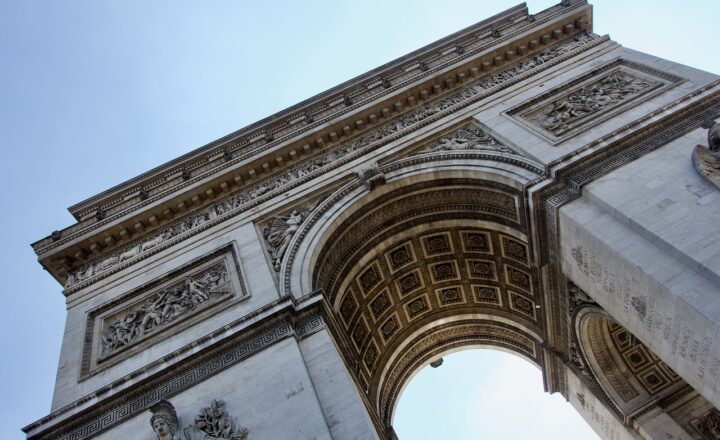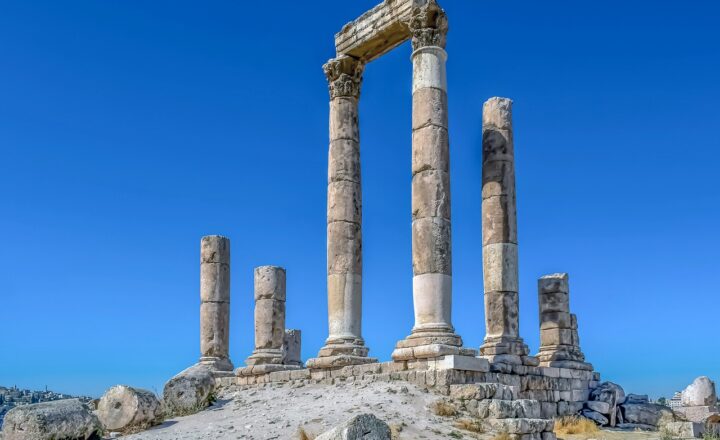
Cambodia, a nation rich in history and cultural diversity, is home to some of the most magnificent ancient temples in the world. Among them, Angkor Wat stands as a testament to the artistic and architectural ingenuity of the Khmer Empire, which flourished from the 9th to the 15th century. This sprawling temple complex is more than just a historical site; it’s a symbol of national pride for the Cambodian people and a UNESCO World Heritage site that attracts millions of visitors each year.
1. A Brief History of Angkor Wat
Originally constructed in the early 12th century during the reign of King Suryavarman II, Angkor Wat was initially built as a Hindu temple dedicated to the god Vishnu. However, over the years, it gradually transformed into a Buddhist temple, reflecting the religious shifts within Cambodia.
Covering over 162 hectares, Angkor Wat is the largest religious monument in the world. Its grand scale, intricate carvings, and massive stone pillars showcase the architectural prowess of the Khmer civilization. Despite facing significant natural and human-induced damages throughout centuries, restoration efforts have preserved much of its grandeur, allowing visitors to marvel at its beauty in today’s world.
2. The Architectural Marvels of Angkor Wat
Angkor Wat is renowned for its classic Khmer architecture. Its layout is a miniature replica of the universe in stone, symbolizing an earthly model of the cosmic world. Here are some of its most striking architectural features:
- The Central Tower: Rising majestically to 65 meters, the central tower represents Mount Meru, the center of the universe in Hindu and Buddhist cosmology. It is surrounded by four smaller towers representing the mountain’s surrounding mountain ranges.
- Moats and Walls: Angkor Wat is enclosed by a large rectangular moat, which signifies the ocean surrounding Mount Meru. The walls are embellished with stunning bas-reliefs depicting epic tales from Hindu mythology, including scenes from the Ramayana and the Churning of the Ocean of Milk.
- Apsara Carvings: The temple features thousands of exquisitely carved Apsaras, celestial dancers in Hindu mythology, showcasing the artistic finesse of Khmer sculptors.
Walking through Angkor Wat is like stepping back in time, allowing visitors to envision the grandeur of the Khmer Empire and the devotion that went into creating this architectural masterpiece.
3. Visiting Angkor Wat: Tips and Guidelines
A visit to Angkor Wat requires some planning to make the most of your experience. Here are essential tips and guidelines:
- Best Time to Visit: The ideal time to explore Angkor Wat is from November to February when the weather is cool and dry. Avoid visiting during the peak heat of April and May.
- Getting There: Siem Reap is the nearest city, and it is easily accessible by air, bus, or car from other major cities in Cambodia. Once in Siem Reap, hiring a tuk-tuk or joining guided tours is the most popular way to explore the temples.
- Entry Pass: Entry to Angkor Wat requires a pass, which can be purchased for one day, three days, or seven days. Prices vary, and it’s recommended to opt for the multi-day pass to fully immerse yourself in the temple complex.
- Timing Your Visit: Arriving early in the morning to catch the sunrise over Angkor Wat is a magical experience, as the temple’s silhouette is reflected in the surrounding moat. Early mornings also mean fewer crowds and cooler temperatures.
4. Exploring the Surrounding Temples
While Angkor Wat is the crown jewel of the temple complex, the surrounding area is home to many other ancient temples worth exploring:
- Bayon Temple: Known for its iconic stone faces, Bayon Temple is a must-visit. The enigmatic smiles of Avalokiteshvara watch over visitors, creating a captivating and surreal atmosphere.
- Ta Prohm: Famous for its eerie beauty, Ta Prohm is a temple overtaken by nature, with enormous tree roots intertwining with the ruins. It’s a unique site that was featured in the film “Tomb Raider.”
- Banteay Srei: Known as the “Citadel of Women,” this temple boasts some of the finest stone carvings in the world. Its pink sandstone and intricate details make it a favorite among visitors.
Exploring these neighboring temples provides a more profound understanding of Khmer architecture and the empire’s history.
5. Cultural Significance of Angkor Wat
Angkor Wat holds tremendous cultural and spiritual significance for Cambodians. It serves not only as a majestic relic of the past but also as a symbol of national identity and pride. Here are a few ways Angkor Wat influences modern Cambodia:
- National Symbol: Angkor Wat is depicted on the Cambodian flag, embodying the nation’s resilience and heritage. It symbolizes the strength of the Cambodian people throughout history.
- Religious Importance: While now predominantly a Buddhist temple, Angkor Wat attracts worshippers who seek solace and spiritual reflection amidst its historic stones, preserving its sacred atmosphere amidst the hustle of tourism.
- Cultural Heritage Tourism: The site contributes significantly to Cambodia’s economy, drawing millions of tourists who support local communities and bolster cultural preservation efforts.
Understanding the cultural significance of Angkor Wat adds a deep layer to the visitor experience, making it not only an exploration of architecture but also of the living legacy of the Cambodian people.
Conclusion: A Journey Through Time
Exploring the ancient temples of Cambodia, particularly Angkor Wat, is akin to embarking on a journey through time. The splendor of this architectural marvel, steeped in history, spirituality, and breathtaking artistry, is unmatched. Whether you’re a history buff, a photography enthusiast, or a traveler seeking to connect with a culture rich in heritage, Angkor Wat offers a myriad of experiences waiting to be discovered.
As you wander through the temple grounds, take a moment to reflect on the countless stories these stones have witnessed and the resilience of the Cambodian people. Angkor Wat isn’t just a destination; it’s a testament to human creativity and the legacy we leave behind for future generations.







